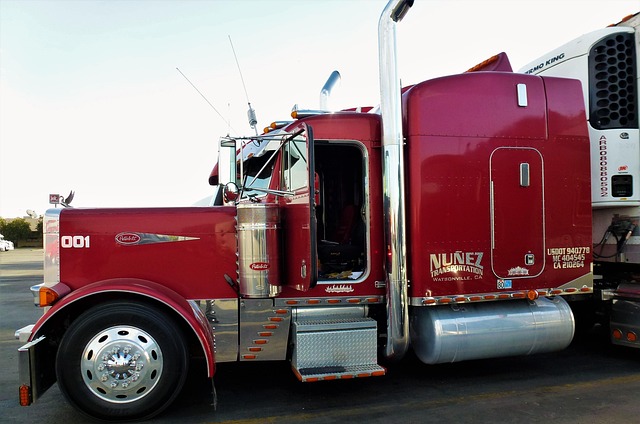Looking to register your car in California? This comprehensive guide walks you through the process step-by-step. First, understand key requirements for car registration in California. Then, gather essential documents for VIN (Vehicle Identification Number) verification, a crucial part of the process. Learn how to perform a VIN check and select your vehicle with the California DMV. Finally, pay fees and obtain license plates to legally hit the road.
- Understand California Car Registration Requirements
- Gather Necessary Documents for VIN Verification
- Perform Vehicle Identification Number (VIN) Check
- Select and Register Your Vehicle with DMV
- Pay Registration Fees and Obtain License Plate
Understand California Car Registration Requirements

Before registering your car in California, it’s crucial to understand the state’s specific requirements. One key aspect is ensuring the Vehicle Identification Number (VIN) is accurate and verified. This process, often referred to as VIN verification, checks the vehicle’s history against national databases to confirm its authenticity and avoid any potential fraud or theft.
In California, you’ll typically need to undergo this vin verification during the registration process. A mobile vin inspection or mobile vin verifier service can make this easier by providing on-site assessments, allowing you to get your car registered conveniently without having to visit a DMV office. These services use advanced technology to swiftly and accurately complete the VIN verification step, streamlining the registration procedure.
Gather Necessary Documents for VIN Verification

Before heading to the California Department of Motor Vehicles (DMV) to register your car, make sure you have all the necessary documents for VIN verification. This process is crucial as it ensures that your vehicle’s unique identification number (VIN) is accurate and matches the specifications of the car. Gather important papers such as the title, registration certificate, proof of insurance, and a valid driver’s license or state ID. Additionally, you’ll need to provide a completed Vehicle Registration Application form, which can be obtained from the DMV website.
For convenience, consider using a mobile vin verifier or conducting a mobile vin inspection before your visit. These services allow you to quickly and easily verify your VIN, ensuring that all details are correct and up-to-date. This proactive step can save time at the DMV and streamline the registration process. Remember to bring along any supporting documents related to recent repairs, modifications, or ownership transfers, as these may be required for a thorough vin inspection.
Perform Vehicle Identification Number (VIN) Check

Before you begin the registration process, it’s crucial to perform a Vehicle Identification Number (VIN) check. This step is essential for ensuring that your car is genuine and free from any legal issues. A VIN verification involves cross-referencing the unique VIN number with databases to confirm its history, including ownership changes, accident records, and outstanding loans or liens.
Utilizing a mobile vin verifier or undergoing a mobile vin inspection can streamline this process. These convenient services allow you to check your car’s VIN in real-time, providing instant access to critical information that will help ensure a smooth registration experience in California.
Select and Register Your Vehicle with DMV

Once you’ve purchased your vehicle, it’s time to select and register it with the California Department of Motor Vehicles (DMV). The first step involves verifying the Vehicle Identification Number (VIN) of your car. This critical process ensures that your vehicle is genuine and aids in establishing ownership. You can complete this VIN verification in several ways, including a traditional visit to a DMV office or by utilizing a mobile vin inspection service for added convenience.
When registering your car, bring all necessary documents, such as the title, proof of insurance, and identification. The DMV will assess any fees and taxes associated with registration and issue you a California license plate. If you opt for a mobile vin verification service, a trained professional will visit your location to perform the VIN check, streamlining the initial registration process and saving you time.
Pay Registration Fees and Obtain License Plate

After completing your vehicle’s registration application at the DMV or through an online platform, the next step is to pay the registration fees. These fees vary based on several factors, such as the type of vehicle and its age. Once the payment is processed, you’ll receive a notification or document detailing your transaction, which includes important information like your vehicle identification number (VIN) verification results.
With your registration fees paid, it’s time to obtain your license plates. In California, these plates are typically assigned based on the vehicle’s make and model. After receiving your plate(s), you’ll need to securely mount them on your car—the front plate is mandatory, while the rear plate is optional but recommended for easy identification during mobile vin verification or inspections by a licensed mobile vin verifier.
Registering a car in California involves understanding specific requirements, gathering essential documents for VIN verification, and completing a straightforward process with the DMV. After performing a vehicle identification number (VIN) check and selecting your vehicle, you’ll pay registration fees and receive your license plate, ensuring your vehicle is legally compliant on California roads.



